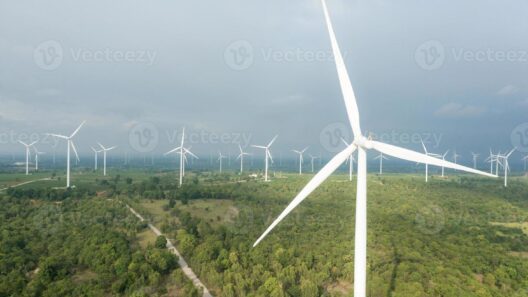In the idyllic world of Stardew Valley, players are immersed in a rustic life filled with farming, fishing, mining, and foraging. Yet, amidst the charming landscapes and pixelated crops lies an essential lesson on sustainability and energy conservation. One could ponder, how can a virtual farmer make a significant impact on their environment? Embracing the theme of “farming smarter, not harder,” this guide will delve into effective methods for conserving energy in Stardew Valley, ultimately fostering a sustainable lifestyle while maximizing productivity.
At the outset, it is crucial to understand the core mechanics at play in Stardew Valley. Players manage a farm, typically beginning with a modest plot of land, which can be expanded and cultivated as they progress. The challenge is to grow crops effectively, raise animals, and participate in various community events—all while using energy judiciously. The energy meter, which depletes with actions such as tilling, watering, and mining, serves as a constant reminder of the delicate balance between labor and resources. Thus, the question remains: how can one minimize energy use without sacrificing prosperity?
First and foremost, crop selection plays a pivotal role in energy conservation. Players should consider planting those that yield high returns with minimal energy expenditure. Fast-growing crops, such as *beans*, *crops*, and *strawberries*, allow for quick harvesting cycles, reducing the overall energy required for cultivation. Additionally, utilizing *quality fertilizer* can enhance crop yield and expedite growth without further exhausting one’s physical reserves.
Moreover, understanding the seasons is vital. Each crop has its designated growing season—crops that flourish in summer won’t do well in spring or winter. By carefully planning crop rotations, a farmer can utilize energy more efficiently, ensuring time is allocated for activities that will boost farm productivity. An astute farmer will find ways to stagger planting, allowing harvests to be frequent without overextending their energy resources.
Incorporating tools that optimize labor is another key strategy. Investing in upgraded tools—particularly those that allow for further reach or area coverage—can save substantial energy. For instance, a *golden watering can* drastically increases the area watered at once, allowing farmers to cover larger sections of their crops in one go, thus conserving energy and time. Similarly, using a *scythe* to clear grass and weeds can streamline the farming process and reduce the effort expended in maintaining the landscape.
Building structures such as *sprinklers* is also an ingenious method of energy conservation. These devices automate the watering process, freeing up time and energy for other important tasks, such as foraging or mining. While crafting and strategically placing sprinklers requires an initial investment of resources and energy, the long-term energy savings can prove invaluable. Farmers can cultivate larger areas without the burden of manually watering every single crop daily.
Consider the benefits of utilizing the *greenhouse*. Once unlocked, this structure allows crops to grow year-round, circumventing the seasonal limitations that can hinder a farmer’s capacity to produce food. The energy saved by minimizing the need to replant seasonal crops significantly boosts the farmer’s overall efficiency. Farmers can invest energy into maximizing the quality of produce grown in the greenhouse without the seasonal disruptions experienced outdoors.
Another potential energy-saving opportunity can be found in animal husbandry. However, this route demands a different strategic approach. The temptation to raise numerous animals might quickly lead to fatigue. Hence, it’s advisable to start small, focusing on a few select animals that provide essential resources, such as cows for milk and chickens for eggs. Utilizing automatic feeders and heating lamps in winter can decrease the daily energy commitment involved in caring for these animals.
As players explore the diverse biomes of Stardew Valley, the potential for foraging comes into play. Gathering wild resources, such as fruits, mushrooms, and flowers, offers a refreshing way to replenish energy without the extensive labor associated with farming. Foraging not only provides sustenance but allows players to conserve energy while still engaging with the world around them. It can be a delightful distraction from daily farming activities while adding variety to the gameplay experience.
Participating in festivals and community events can also facilitate energy conservation. These events often offer opportunities to engage with fellow villagers, learn farming techniques, and even acquire energy-restoring items. Attending these festivities not only fosters a sense of community but can also serve as a delightful respite from the rigors of day-to-day farming.
Finally, let us not overlook the importance of strategic time management. It is critical for Stardew Valley players to prioritize tasks each day. By selecting a few high-impact actions rather than attempting to complete every task available, farmers can conserve energy effectively. Planning daily objectives around energy levels ensures that productivity does not lead to unwarranted exhaustion. As days progress, understanding one’s limits allows for a balanced lifestyle within the game.
In conclusion, energy conservation in Stardew Valley is a dynamic endeavor that emphasizes the balance of productivity and sustainability. By adopting smart farming practices, prioritizing crop selection, leveraging technology, and embracing community through foraging and festivals, players can thrive in their agricultural pursuits. Ultimately, understanding the intricacies of energy management leads to a more successful and gratifying farming experience. So, are you ready to rise to the challenge of conserving energy while building your dream farm? The lush fields of Stardew Valley await your newfound wisdom.








